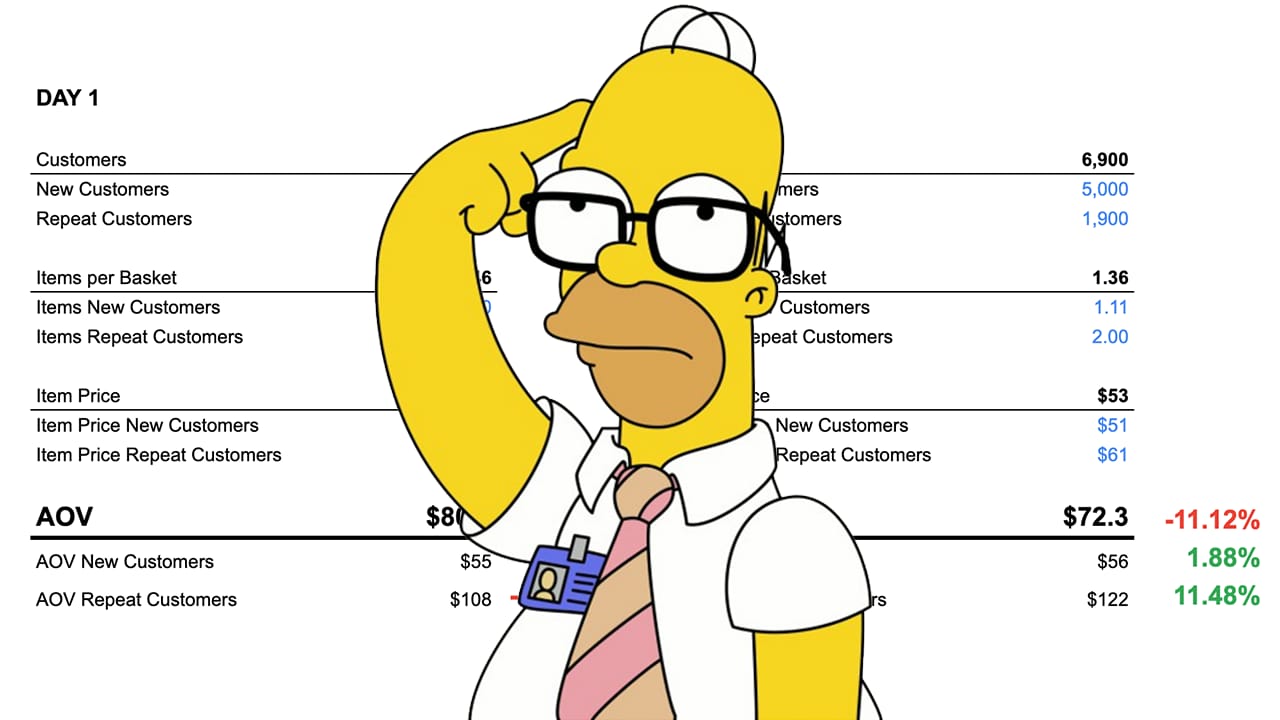Today, I'm sharing how a hidden data trap—Simpson's Paradox—is silently misleading even the smartest eCommerce and retail executives, causing costly strategic mistakes.
Why you, as a brand founder, are constantly getting screwed with data
Let's take a simple example.
You look at your latest reporting and see a sharp drop in the average order value.

Clearly, something must be wrong with the number of items or the average item price.
Your eComm team recently carried out an update for cross-selling which has probably backfired.
You look at the data: 8% fewer items, 3% lower item price.

Furious, you go to your ecommerce director.
But he is deeply relaxed.
Why?
He was just about to come to you to tell you about the improvements...
2% higher AOV from new customers and 11% better from existing customers.

How can that be?
The reason is the Simpson Paradox.
This has nothing to do with the Simpsons but is a statistical effect named after Edward H. Simpson.

You got screwed by your poor analytics.
What happened?
Yesterday, a new marketing campaign was launched that brought in a flood of new customers and completely changed the ratio of new to existing customers.

In addition, existing customers always have a higher average order value with more products at higher prices than new customers.

As a result, it can happen that even if the shopping baskets of both groups have increased, the overall average falls.
Crazy, isn't it?

You can find the google sheet here. Feel free to make a copy!
That's why you can't use simple reporting dashboards to really read anything from the data.
Analytics and reporting are useless without the WHY.
Averages are useless without context...
TIP: I know that’s a lot to take in! I’ve been in the same position—feeling overwhelmed about where to find the data, how to get started, and how to embed an LTV-driven mindset into my teams. That’s why we built RetentionX. As a brand operator, it has been my #1 internal tool to turn things around before launching it as publicly available software.
That’s it for this week!










